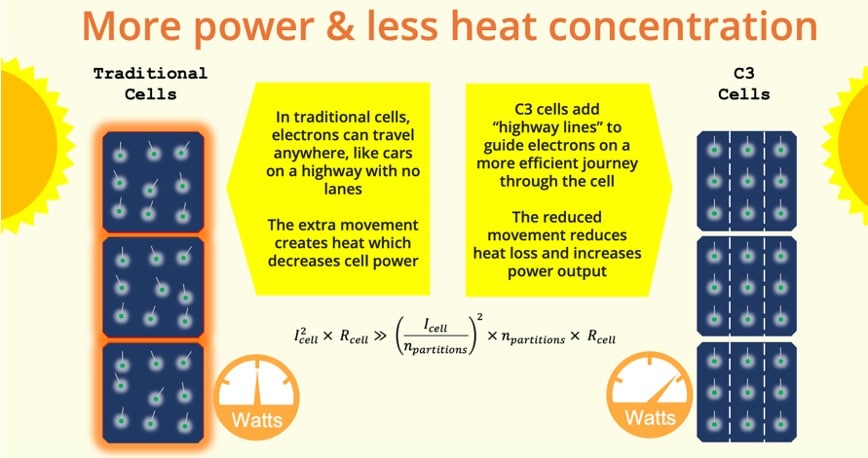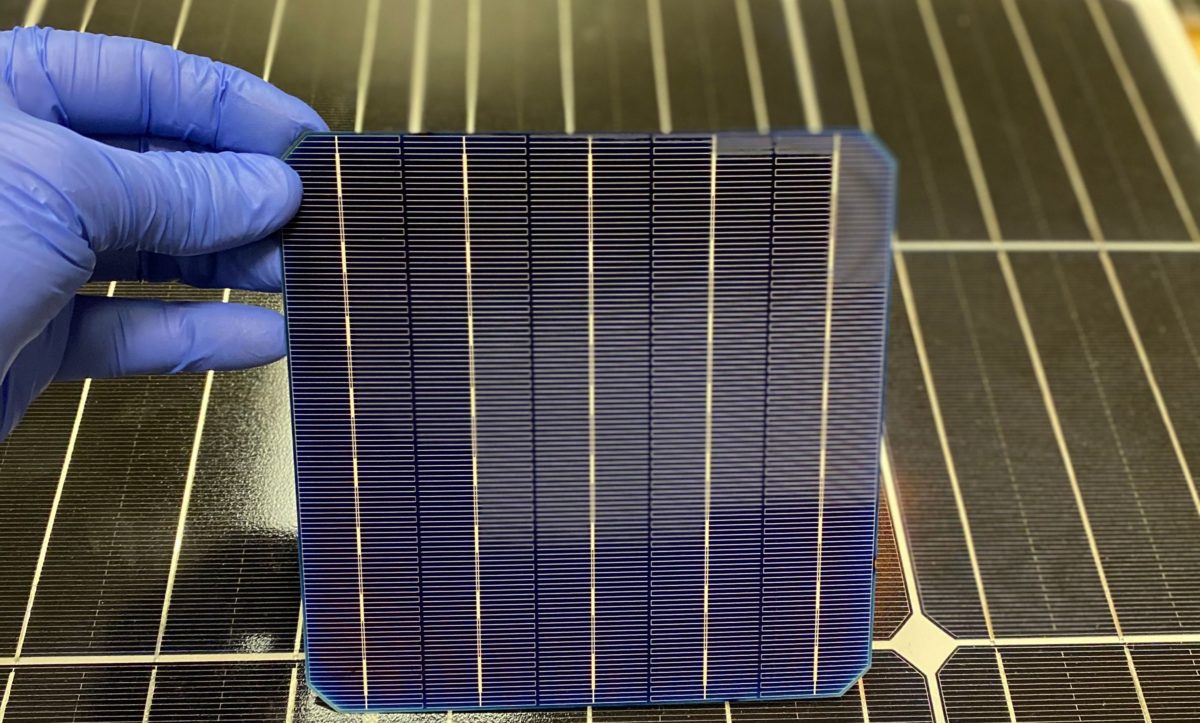While PV system costs are falling faster than anticipated, there is one module component that isn’t following this trend, and is actually rising in cost significantly: silver, the price of which is up nearly 40% from a year ago. As quickly as this issue has arisen, one company has created a solution that claims to be able to reduce silver costs by 3%, while also increasing module power.
Enter Solar Inventions, winners of the first American-Made Solar Prize and creators of the Configurable Current Cell (C3) subcell technology, a new PV cell architecture that creates resistively bounded subcells, effectively putting solar cells into “lanes” by electrically dividing each cell into subcells, allowing current to flow more directly.
The idea of creating subcells is nothing new, but what Solar Inventions and Chief Scientist, Dr. Benjamin Damiani, have been able to do is develop a way to create these subcells efficiently and without specialized processing. In fact, according to the company’s first whitepaper, manufacturers are able to utilize C3 with just small changes in metallization print patterns and selective doping. This is achievable via minor print screen modifications and marginal changes to production lines, as C3 configures the subcells in parallel to a cell’s traditional busbars.
The technology works with 95% of all silicon cell architectures, including monocrystalline, polycrystalline, PERC, HJT, and bi-facial.

“We got to the finals of the Solar Prize and we were with the head of all solar for the Department of Energy,” CEO Bill Nussey told pv magazine. “She looks at Ben and she says ‘First of all, there’s no way that this could not have been invented. Second of all, I’m assuming the answer is that nobody has invented it because it doesn’t work.’ So Ben whips out an electroluminescent picture, a sort of an x-ray of a solar panel, shows it to her, her jaw drops and she says ‘Holy cow, this works.’ An hour later, we won.”
The combination of reducing silver costs and increasing module power is one that Damiani says can bring down module price by up to 1¢/kWh, which is no small feat. Because the company is so confident in the returns that manufacturers will see by employing C3, Nussey shared that they won’t be charging companies a licensing fee until the manufacturing changes have been implemented and their cost reduction is proven to the manufacturer.
For a 300-MW PERC cell and module manufacturer, according to the whitepaper, C3 creates nearly $1 million in value through this 3% reduction in silver and additional 2 to 3 watts per 60-cell panel.
“This is an interesting thing,” Damiani told pv magazine. “I have a tendency to want to talk about the cool science and changing the solar cell… but I think what really gets people’s attention is the silver savings. Most people’s approach to saving silver is to do double print or print-on-print, where they’re trying to lay down less and less and print finer and finer lines. We’re taking a different approach. We’re using some electrical configurations to allow a minimal current path for the power to get to the busbars. This allows for us to reduce the silver by, depending on what the technology is, 3% for a standard PERC cell…but when you get into bifacial, you can save on backside silver as well, which is like 5%.”
As exciting as these breakthroughs are for Solar Inventions, they’re also just the first steps. The company plans to release a second generation technology in the near future, one which is claimed will deliver greater resistance to microcracks and thermal events, while also reducing the effects of module shading.
This content is protected by copyright and may not be reused. If you want to cooperate with us and would like to reuse some of our content, please contact: editors@pv-magazine.com.









Very cool. Hope all the solar manufacturers pick it up.
And, liking version 2.
Cool way of saving Ag silver with increased power. That’s an excellent combination.